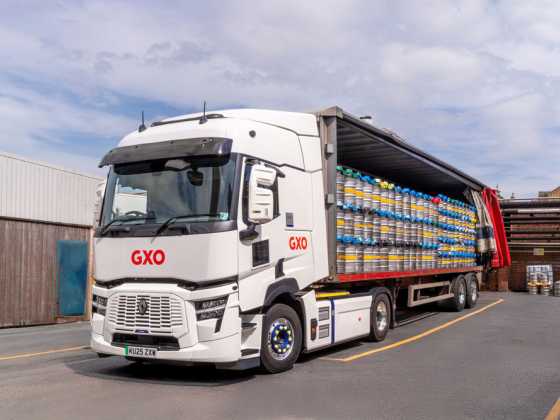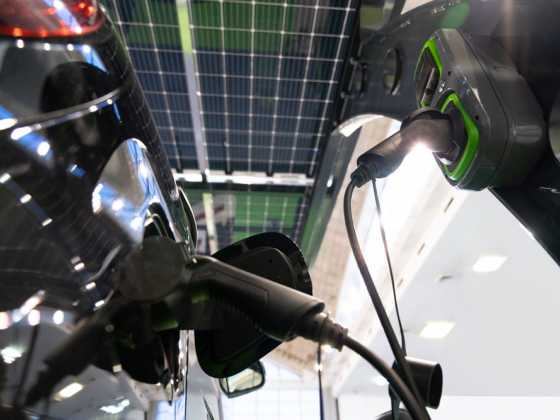Supply chain resilience and climate change

The logistics sector is embracing the decarbonisation agenda but needs a greater say on how it is achieved. Jonathan Walker, head of infrastructure policy at Logistics UK, outlines the industry’s key asks.
Climate change is already disrupting transport networks due to an increase in frequency and intensity of extreme weather events. The recent “State of the UK Climate 2023” report published by the Met Office shows the number of “hot” days (28C) experienced in the UK has more than doubled, and “very hot” days (30C) more than trebled for the most recent decade (2014-2023) compared to 1961-1990. And it is not only temperatures that are rising, with five of the 10 wettest years for the UK since 1836 having occurred in the 21st century.
You will be well aware of these issues, but it is sometimes worth reminding ourselves of the stark realities and why the whole of the UK economy is working tirelessly towards reaching the domestic target to reduce greenhouse gas (GHG) emissions by at least 100 per cent of 1990 levels by 2050 and reach “net zero”.
Extreme weather does not only lead to travel disruption: the economic cost for transport operators is already significant. Winter floods cost an estimated £180 million in damages to motorways in 2013/14 and weather disruption costs for Network Rail over the last 15 years topped £3 billion.
As part of the solution, the logistics sector is already embracing the decarbonisation agenda and making changes to transition away from fossil fuels but the industry still needs a greater say on how this is achieved. It is essential that the new government works closely with logistics businesses to enable collaboration so environmental goals can be reached in a fair, pragmatic way. While progress has been made and industry continues to innovate and adapt, the high costs of low carbon fuels and electrification, as well as insufficient grid capacity and lack of investment, mean many barriers remain.
A clear roadmap
Decarbonising the logistics sector must be underpinned by an agreed and co-created logistics roadmap to net zero, as well as a phase-out of fossil fuels that is based on the availability of technology, infrastructure investment, regulatory reform and tax incentives. This emissions reduction plan should include zero tailpipe emission technology and supporting infrastructure, as well as the role of low carbon and sustainable fuels across all transport modes.
The new government has committed to making the UK a clean energy superpower and this will be essential to support the logistics industry’s decarbonisation programme and transition to zero emission vehicles. Still more needs to be done, however, and there are some clear steps the government needs to take as a matter of urgency to support the logistics sector in meeting its net zero targets.
Clarity on decarbonisation policy
The government has made long term planning central to its industrial strategy and it is essential it clarifies the end of sale date for new internal combustion engine vans. Businesses need clarity to enable succession planning for vehicles, and the government needs to ensure the deadline is matched by a substantial increase in public charging and incentives for businesses so they can afford the investment required for depot charging and new zero emission technology vehicles.
Critical need for infrastructure
With net zero deadlines approaching, there is a growing risk that the energy infrastructure needed will not be delivered at the pace the sector requires if the supply chain is to be maintained. Public charging infrastructure is not being delivered with logistics in mind and zero tailpipe emission HGVs remain unproven for long-distance operations.
The amount of energy required for the UK’s fleet of HGVs and vans to be fully electric or hydrogen fuel cell is substantial so it is also critical that the national grid can handle the uplift in demand for power and ensure the energy can be supplied where it is needed. There is also no agreed plan for the role low carbon fuels will play in the transition, despite being able to reduce emissions by up to 80 per cent and provide a green solution for the many internal combustion engine vehicles that will be in use for decades to come.
Remove regulatory barriers
A simple legislative change requiring no infrastructure would be to align 4.25 tonne electric van regulations with what is already in place for 3.5 tonne diesel vans. The batteries in electric vans make them heavier than the equivalent sized diesel vans, meaning operators that make the switch are exposed to costly operator licensing, more expensive MOTs and drivers’ hours rules designed for HGVs. Aligning electric and diesel van regulations would help remove the red tape barriers that are currently limiting the uptake of electric commercial vehicles.
Incentivise investment in decarbonisation
The new government can also incentivise business investment in decarbonisation: one practical step that we have been calling for is full expensing for capital investment to be expanded to cover leased and hired vehicles, and fees paid to energy network operators to deliver the asset upgrades necessary to support fleet decarbonisation. Industry is keen for closer working relationships with government and these types of incentives are exactly what are needed to back the sector in its continued efforts to achieve the nation’s net-zero targets and help keep supply chains resilient when faced with a changing climate.
In July 2021, Logistics UK launched its Route to Net Zero campaign providing members with the opportunity to make a public commitment outlining how they are tackling emissions as quickly and urgently as possible. It shows the desire within the industry and the steps that are already being taken to reduce emissions, and the government would be “pushing at an open door” if it creates a positive policy environment that helps the sector transition to net-zero in a fair and sustainable way.






